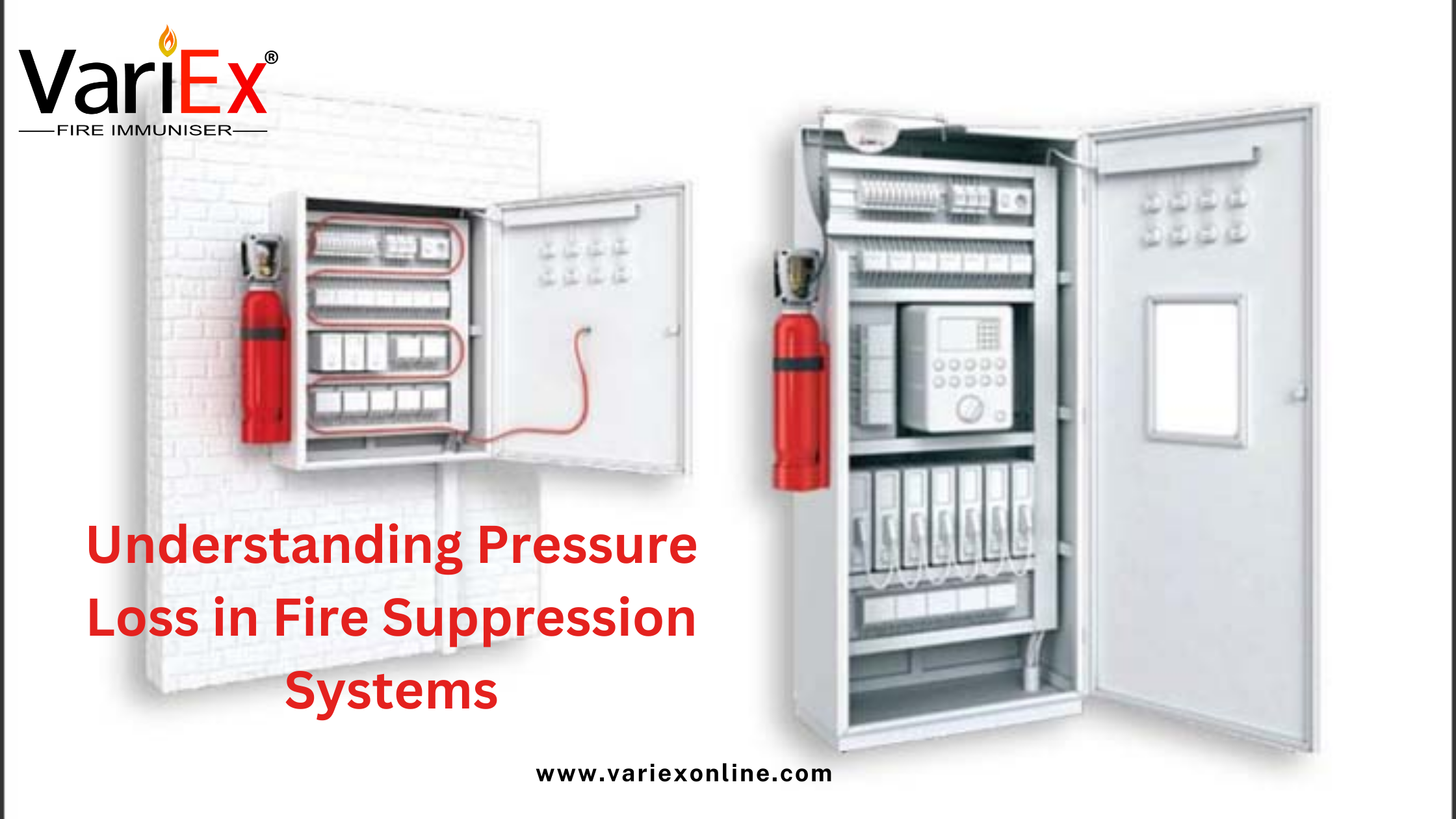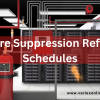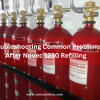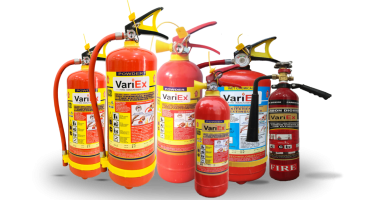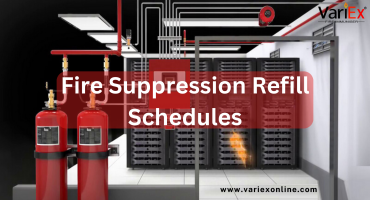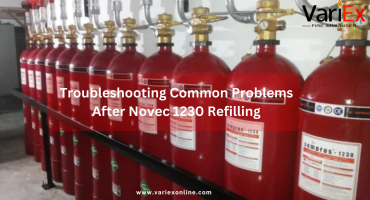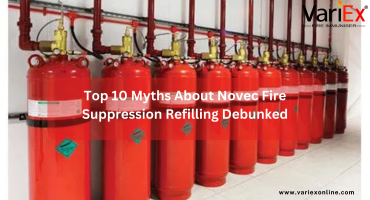![]()
Fire Immuniser
+91-7829629111
Email: info@variex.in
Varistor Technologies Pvt. Ltd.
Block-1, First Floor, Ardente Office One, Hoodi Circle, ITPL Main Road, Bengaluru, Karnataka 560048, IN
Understanding Pressure Loss in Fire Suppression Systems
Understanding Pressure Loss in Fire Suppression Systems
Fire suppression systems are essential for protecting lives and property in the event of a fire. However, one of the most common issues that can compromise their efficiency is pressure loss. When pressure drops within the system, it may fail to discharge the correct amount of suppression agent, leading to inadequate fire protection. Understanding the causes, effects, and solutions for pressure loss in fire suppression systems is crucial for maintaining a reliable and compliant fire safety setup.
What Is Pressure Loss in Fire Suppression Systems?
Pressure loss refers to the decrease in pressure within a fire suppression system, which can impact its ability to distribute fire-suppressing agents effectively. This issue may occur due to leaks, faulty components, temperature fluctuations, or insufficient maintenance.
A properly maintained fire suppression system should maintain its pressure levels to ensure rapid and effective response during a fire emergency. Even a small drop in pressure can reduce the system's ability to disperse the suppression agent, increasing the risk of property damage and endangering occupants.
Common Causes of Pressure Loss
Several factors contribute to pressure loss in fire suppression systems. Identifying and addressing these issues is key to maintaining system reliability.
1. Leaks in the System
Cracked or damaged pipes
Loose or improperly sealed connections
Corrosion leading to small punctures in piping
2. Temperature Fluctuations
Extreme heat can expand gases, altering pressure levels
Cold temperatures can cause CO₂ and other suppression agents to contract, leading to pressure drops
3. System Discharge or Partial Discharge
If the system has been triggered but not properly refilled, pressure loss can occur
Accidental discharges can cause low-pressure warnings
4. Faulty Valves and Pressure Regulators
A malfunctioning pressure relief valve can cause unintentional depressurization
Regulators that fail to maintain consistent pressure levels
5. Improper System Installation
Incorrect pipe sizing can lead to excessive friction loss, reducing pressure
Poor system design may cause uneven distribution of suppression agents
6. Aging System Components
Old suppression systems may experience wear and tear on crucial parts
Degraded hoses, seals, or fittings can cause gradual pressure reduction
7. Lack of Routine Maintenance
Failing to conduct regular inspections and pressure checks can lead to unnoticed issues
Over time, pressure loss can go undetected until the system fails during an emergency
Effects of Pressure Loss in Fire Suppression Systems
The consequences of pressure loss in a fire suppression system can be severe. Below is a breakdown of its impact:
| Effect | Description |
|---|---|
| 🔥 Reduced Fire Protection | Lower pressure leads to ineffective discharge of suppression agents, increasing fire risks. |
| 🚨 System Malfunction | Insufficient pressure can prevent the system from triggering when needed. |
| ⚠️ Regulatory Non-Compliance | Failure to maintain system pressure can result in fines and penalties under fire safety codes. |
| 💸 Increased Maintenance Costs | Neglecting pressure loss issues can lead to expensive repairs or system replacements. |
| ⏳ Longer Fire Suppression Time | A system with low pressure may take longer to suppress a fire, increasing damage potential. |
How to Detect Pressure Loss in Fire Suppression Systems
To prevent system failure, regular monitoring and detection of pressure loss is crucial. Here’s how you can identify pressure drops:
✅ Check Pressure Gauges – Regularly monitor gauges to ensure they maintain required pressure levels.
✅ Look for Visible Leaks – Inspect pipes, valves, and connections for signs of leakage.
✅ Monitor System Alarms – Most modern suppression systems feature low-pressure alerts that notify building managers.
✅ Conduct Regular Testing – Schedule professional fire suppression system inspections to test pressure and functionality.
✅ Measure Discharge Performance – Ensure the system can properly disperse suppression agents when tested.
How to Fix Pressure Loss in Fire Suppression Systems
Addressing pressure loss promptly is essential to keeping your fire suppression system in working condition. Below are key solutions:
1. Fix Leaks and Seal Connections
Inspect all piping and connections for leaks
Replace corroded or damaged components
Use high-quality seals and gaskets to prevent pressure loss
2. Refill the Suppression Agent
Ensure your system is refilled to the correct pressure level
Use a certified refilling service to maintain compliance with NFPA regulations
3. Test and Replace Faulty Valves
If pressure regulators or relief valves are malfunctioning, they should be repaired or replaced
Ensure that pressure relief valves are not set too low
4. Upgrade System Components
If your fire suppression system is over 10-15 years old, consider upgrading to newer technology
Replace old hoses, pipes, and discharge nozzles if they show signs of wear
5. Ensure Proper Temperature Control
Install temperature monitoring systems in areas where suppression agents are stored
Maintain consistent temperatures to prevent pressure fluctuations
6. Schedule Regular Maintenance & Inspections
Conduct quarterly or annual pressure tests
Work with certified fire protection professionals to ensure optimal system performance
Keep detailed records of inspections and refilling services
Conclusion
Pressure loss in fire suppression systems can compromise fire protection and put people and assets at risk. Understanding the causes, detecting warning signs, and taking proactive steps to address pressure drops will ensure that your system remains compliant and functional. Regular maintenance, proper refilling, and system inspections are key to preventing issues before they lead to system failure. If you suspect pressure loss in your fire suppression system, schedule an inspection immediately to safeguard your business and maintain fire safety compliance.
Frequently Asked Questions
The most common causes include leaks, temperature fluctuations, faulty valves, improper installation, and lack of routine maintenance.
It is recommended to check pressure gauges weekly and schedule professional inspections at least once a year.
No, low pressure can affect discharge efficiency and may prevent the system from extinguishing a fire effectively.
Prevent pressure loss by sealing leaks, refilling the system regularly, checking valves, and conducting routine maintenance.
If you notice pressure loss, contact a certified fire suppression system professional immediately for an inspection and necessary repairs.
Final Say
At VariEx.in and VariexOnline.com, we specialize in supplying and installing top-quality fire fighting systems and equipment. From fire extinguishers to advanced suppression systems, we offer comprehensive solutions tailored to your needs. Our experienced team ensures precise installation and maintenance for optimal safety.
Trust VariEx for reliable fire protection. Contact us online or call 7829629111 to learn more.
We specialize in manufacturing, supplying, and distributing a comprehensive range of fire fighting equipment, including state-of-the-art fire extinguishers. Read our most searched blogs and find interesting information on topics such as how to use a fire extinguisher, how to calculate fire fighting water tank capacity, fire extinguisher refilling, obtaining a Fire NOC, understanding fire fighting systems, types of fire protection systems, the fire hydrant system, and the fire sprinkler system. These resources provide essential knowledge for ensuring safety and compliance with fire safety regulations. Additionally, you can explore guides on the maintenance of fire protection equipment, the latest advancements in fire safety technology, and best practices for fire risk assessment and management.
Our expertise extends to fire alarm systems, fire hydrant systems, and fire suppression systems, including fire sprinklers. Each product meets rigorous international standards for reliability and performance, ensuring effective fire safety products tailored to diverse applications and industries. Additionally, we are providing Fire Extinguisher Refilling and AMC services to ensure ongoing maintenance and operational readiness of fire safety equipment.


